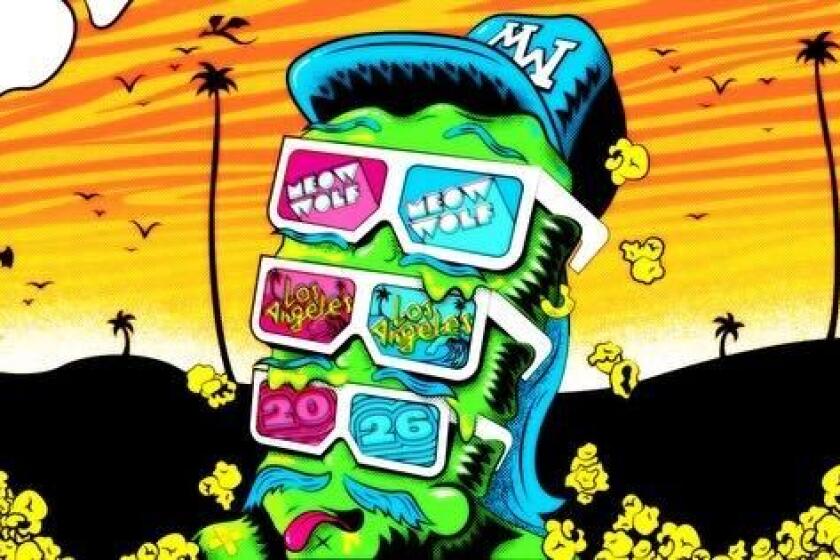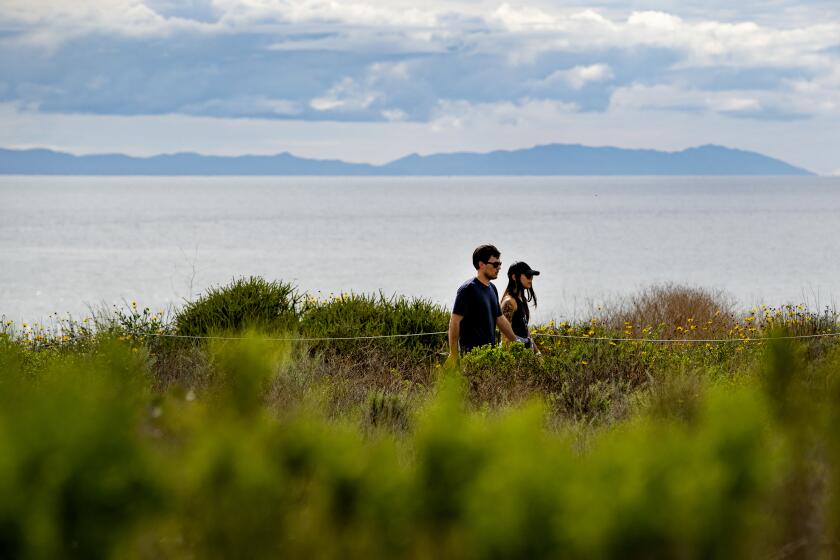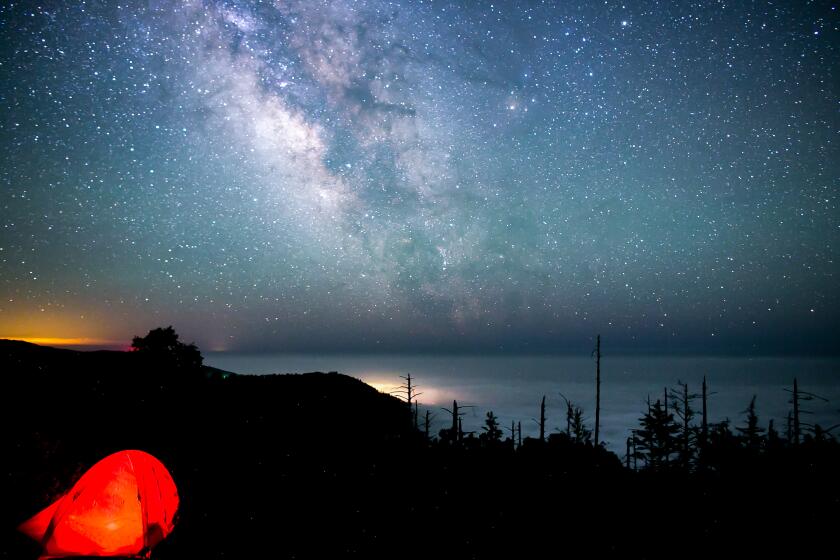Dinosaurs Moving Into L.A. Zoo
Displaying animals that became extinct millions of years ago, and replicas at that, is a departure for the Los Angeles Zoo.
But that is what the Griffith Park zoo will do, starting Friday, when it opens a new temporary exhibit featuring robotic dinosaurs.
“The idea is to show people what dinosaurs looked like, how they might have moved ... and to use that to connect them with living animals -- things like the rhinoceros, the cassowary and reptiles we have in our collection, living animals whose ancestors are very ancient,” said zoo Director John Lewis.
The exhibit has another message as well: “We don’t want people in the future saying, ‘What was the tiger like?’ ” Lewis said. The dinosaur vanished before the advent of humans, he reminded, “but we don’t want to be responsible for the loss of other animals.... Extinction is forever.”
The zoo’s former Koala House has been transformed for the exhibit, which will continue through Nov. 21. (The zoo’s sole koala now lives outside, near its former residence.) Towering artificial trees, ferns and other greenery create a habitat, of sorts, for the 18 robotic dinosaurs, including a Tyrannosaurus rex and a triceratops, both with their young, an apatosaurus, velociraptors and a maiasaura, the “good mother dinosaur,” with a nest full of hatchlings.
During installation, the crew had no trouble getting the 8-foot-tall, one-half-actual-size apatosaurus through the door of the former Koala House.
“Its neck comes off, its tail comes off, it’s easy,” explained Jun Shimizu, president of Kokoro Dinosaurs, the Woodland Hills firm that supplied the robotic creatures.
Officials hope that as many as one quarter of zoo visitors -- more than 1 million annually -- will pay a $2 per person surcharge to see the new “Dinosaur Den.” Such related activities as a vast dinosaur-themed maze and a puppet show will be included with regular zoo admission ($9 for adults, $4 for children ages 2 to 12).
Officials said the zoo’s “Destination: Dinosaurs!” program will cost just under $800,000, including Kokoro’s $172,500 exhibition fee and $42,000 for the 2,000-square-foot maze. Corporate sponsors have contributed $276,000 to help offset the cost, as will the surcharge.
The robotic animals are built in Japan by Kokoro’s parent company, which began making moving animal models for amusement parks in 1969.
“They made Godzilla-type dinosaurs,” said Shimizu, 56, once a fabricator of exhibits for natural history and art museums.
In the mid-1980s, he started his Woodland Hills company after persuading the Japanese parent firm to make more scientifically correct, lifelike models. The San Fernando Valley company has a trio of in-house engineers and fabricators, and models are stored in its warehouse between exhibits.
According to Shimizu, the majority of Kokoro’s clients are children’s museums, not surprising given the number of youngsters whose first words are “Ma-ma,” “Da-da” and “triceratops.”
Shimizu said many of his firm’s dinosaur replicas were made in consultation with paleontologist John Horner and other scientists. Locally, Shimizu has consulted with staff at the Page Museum at the La Brea Tar Pits on a series of Ice Age models, including saber-toothed cats and a giant sloth (not part of the zoo exhibit).
The dinosaurs have skeletons of steel and aluminum. Hand-carved from polyurethane, they are covered with pliable skins formed by a special paint applied while the forms are moving. Computer chips and compressed air allow them to swing their heads, swish their tails and make other lizard-like movements.
Shimizu recalled that the late 1980s and early 1990s were years of turmoil in the robotic dinosaur business, as manufacturers scrambled to keep up with one revolutionary discovery after another. He remembers the “great brontosaurus recall,” shortly after scientists decided that the giant plant-eater was wearing the wrong head and was actually an apatosaurus.
The zoo’s most recently revised model is the three-quarters life-size Tyrannosaurus rex, built less than two years ago. It cost about $300,000 to make, Shimizu said, and has such up-to-the-minute scientific features as a longer neck.
Sign up for The Wild
We’ll help you find the best places to hike, bike and run, as well as the perfect silent spots for meditation and yoga.
You may occasionally receive promotional content from the Los Angeles Times.



